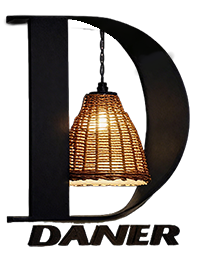Modern consumers are first drawn in by the look of a fixture. Reimagining the structure of pendant lights, wall sconces, track lighting, and table lamps allows brands to shift perception from "just a light" to "a design statement." Modular LED fixtures and multi-directional magnetic track systems are standout innovations that marry form and flexibility.
2. Create Interactivity for Immersive Experiences
Today’s users want more than static lighting. With smart lighting and app-controlled systems, users can adjust brightness, color temperature, and RGB color tones to match their mood or activity. These dynamic, interactive lighting scenarios turn everyday usage into a personalized experience—inviting customers to explore and engage with light like never before.
3. Innovate with Materials and Optics for a Premium Feel
Moving beyond traditional materials like glass and crystal, modern lighting incorporates brushed metal, ceramic, acrylic, and natural elements like rattan. Combined with anti-glare technology and diffused optics, these materials enhance both aesthetics and comfort. For example, high-transmission acrylic shades paired with indirect LED lighting structures offer soft, ambient glows ideal for both residential and commercial environments.
4. Expand Applications Through Cross-Industry Design
Lighting is no longer confined to homes. Brands are now placing LED strips, motion sensor lights, and mood lighting into cafés, fitness studios, galleries, and even immersive pop-up stores. By layering multiple light sources and adjusting lighting temperature zones, designers create immersive, emotionally rich environments that feel like stepping into another world.
5. Data-Driven Design: When Tech Meets Emotion
With AI and user behavior analytics, brands can now predict customer lighting preferences with precision. This allows targeted development—such as RGB bedside lamps for kids, or glare-free high CRI downlights for office spaces—making lighting not just functional, but emotionally resonant.
In Conclusion:
Innovative lighting is about more than just brighter bulbs or sleeker shapes. It’s about inviting customers into a multi-sensory world—where light is seen, felt, and remembered. The future of lighting lies not in illumination alone, but in experience, story, and connection.
#LightingInnovation #SmartLighting #LEDFixtures #TrackLighting #PendantDesign #LightingAesthetics #ImmersiveLighting #WallSconces #TableLamps #LightingTrends2025
Lighting is no longer confined to homes. Brands are now placing LED strips, motion sensor lights, and mood lighting into cafés, fitness studios, galleries, and even immersive pop-up stores. By layering multiple light sources and adjusting lighting temperature zones, designers create immersive, emotionally rich environments that feel like stepping into another world.1. Break Traditional Forms — Design Is the First Touchpoint
Modern consumers are first drawn in by the look of a fixture. Reimagining the structure of pendant lights, wall sconces, track lighting, and table lamps allows brands to shift perception from "just a light" to "a design statement." Modular LED fixtures and multi-directional magnetic track systems are standout innovations that marry form and flexibility.
2. Create Interactivity for Immersive Experiences
Today’s users want more than static lighting. With smart lighting and app-controlled systems, users can adjust brightness, color temperature, and RGB color tones to match their mood or activity. These dynamic, interactive lighting scenarios turn everyday usage into a personalized experience—inviting customers to explore and engage with light like never before.
3. Innovate with Materials and Optics for a Premium Feel
Moving beyond traditional materials like glass and crystal, modern lighting incorporates brushed metal, ceramic, acrylic, and natural elements like rattan. Combined with anti-glare technology and diffused optics, these materials enhance both aesthetics and comfort. For example, high-transmission acrylic shades paired with indirect LED lighting structures offer soft, ambient glows ideal for both residential and commercial environments.
4. Expand Applications Through Cross-Industry Design
5. Data-Driven Design: When Tech Meets Emotion
With AI and user behavior analytics, brands can now predict customer lighting preferences with precision. This allows targeted development—such as RGB bedside lamps for kids, or glare-free high CRI downlights for office spaces—making lighting not just functional, but emotionally resonant.
In Conclusion:
Innovative lighting is about more than just brighter bulbs or sleeker shapes. It’s about inviting customers into a multi-sensory world—where light is seen, felt, and remembered. The future of lighting lies not in illumination alone, but in experience, story, and connection.
#LightingInnovation #SmartLighting #LEDFixtures #TrackLighting #PendantDesign #LightingAesthetics #ImmersiveLighting #WallSconces #TableLamps #LightingTrends2025
Address
No. 3, Lane 6, Fushan, Tiebian Village, Henglan, Zhongshan City

CONTACT US
_lutHu5.png)


Call Us
13527147288
E-mail Us



